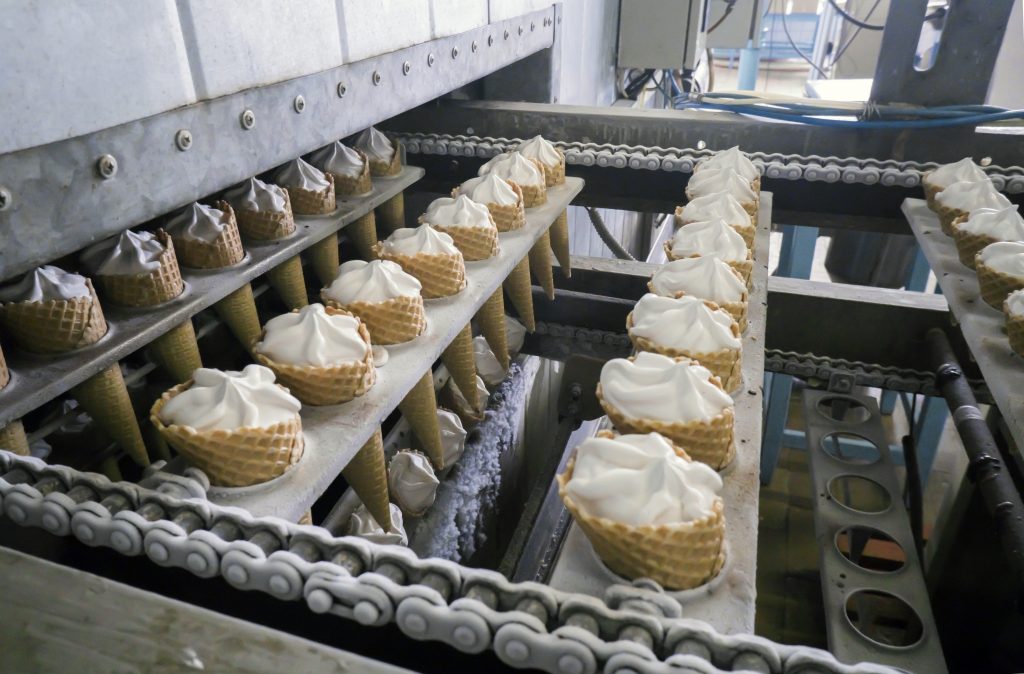How Planning & Optimization Become a Treat

It’s July and that means that many of us are feeling the sweltering temperatures of summer. The sun is blazing, the air is thick, and baby, it’s hot outside! Temperatures are soaring across the land and people are looking for a way to beat the heat. But how?
One of the more popular ways to stay cool is with that delectable frozen treat many of us enjoy–ice cream! Want to know more about that sweet treat? Here’s the scoop.
Sweet Statistics
Fast forward from that time when an “ice cream-like food” originated in China in 618-97 AD to today. Who eats the most ice cream? It turns out that the New Zealanders hold the record for the largest consumers of ice cream at 7.5 gallons (28.3 liters) per person per year with Americans following second at an average of 5.5 gallons (20.81 liters), trailed by Australians in 3rd place. These counties have remained in the same top 3 ice cream consumers for years; you know who you are!
National Ice Cream Day
Established in 1984, National Ice Cream Day celebrates one of the world’s most loved desserts. Observed on the third Sunday of July annually, it was inaugurated by President Ronald Reagan, highlighting the popularity of ice cream among more than 90% of Americans. This day brings together ice cream enthusiasts globally, fostering a sense of community and appreciation for this timeless delight.
Different ice cream-related national days are also celebrated, such as National Chocolate Ice Cream Day on June 7, National Peach Ice Cream Day on July 17, and National Vanilla Ice Cream Day on July 23 among others. Interestingly, December 13 also observes a National Ice Cream Day, although it’s less known due to the cold season.
National Ice Cream Day has become a key part of the celebration of ice cream, offering the perfect opportunity to indulge in various flavors. From the classic vanilla to the adventurous caramel ice cream, there’s a taste for every ice cream lover.
Keeping Cool with Ice Cream Production
Could ice cream habits change? If there is a change in ice cream habits, how do ice cream producers deal with it? How is the uncertainty in numbers managed? Additionally, the weather and temperatures are factors in determining what and when to produce.

As seasonality is an important factor, ice cream producers have to deal with great uncertainties and fluctuation in demand.
Demand is high when it’s warm outside, and lower when it´s cold, but when is the ideal time to start production? Ultimately, it’s all about having a reliable demand plan.
A key challenge is to not over-produce and stock up on excessive inventory while at the same time be ready for summer by securing on-shelf availability and fulfillment. Producers cannot start the machines when the first warm days of summer are getting close. That´s too late. Typically, they start building inventory at the end of the year by implementing reliable demand forecasts plus sound inventory and manufacturing and production management software. They also need to be able to change their initial plan when demand justifies it, see the effect of these changes on the supply chain and act accordingly.
Smart Planning in Ice Cream Production
The planning and optimization of the inventory build-up starts typically 6 to 8 months in advance. This ensures that the right products are available in the right quantities during the peak season. With high visibility of every aspect of the supply chain, changes are reflected immediately. For example, these changes in demand can lead to a later start for pre-production, which lowers inventory and reduces working capital. During the season, a thorough analysis is needed to adjust plans when factors change. If the production process allows it, producers can quickly make changes to adhere to the demand plan.
In fact, the way we produce, and distribute is being reshaped in light of increasing innovation as well as globalization. These changes reveal disruptive forces from human and industrial activities that can lead to overshooting vital resources. So, what’s the way forward? It means driving more sustainable operations for everyone, especially in the area of ice cream production.
For ice-cream producers, it’s a balancing act between order fulfillment and inventory and production costs. For the average consumer of ice cream, it’s a much simpler question: Chocolate or vanilla?

